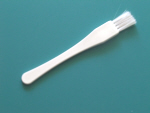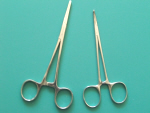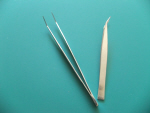|
Sewing Machine Owner Repair – Things You Can Fix Yourself
Sewing machine owner repair involves fixing operation problems yourself. There are certain issues that one can trouble shoot and perform machine owner repair on before seeking a professional repair person.
What are some of the issues that can prove to be operator issues that can be corrected by the owner? Some important features of correct machine operations are the tension settings of the machine, the winding and positioning of the bobbin, the needle, the threading of the machine, and the presser foot. Another important task in correct machine operation is keeping the machine clean. For some great information on how to fix your own sewing machine or fixing sewing machines for others, click here!
Sewing Machine Tension – Just What Is It? Tension is the amount of pressure on the threads as they pass through the machine. Too much pressure causes too little thread to be fed into the stitch, causing the fabric to pucker. If there is too little pressure, then too much thread is fed into the stitch, causing a weak loose stitch which can easily come out of the fabric. Generally the average thread tension is about 4. To correct a tension problem, one would reduce the tension to a lower number if the tension is too tight causing the thread to break. If the stitches are too loose, then the tension would be increased to a higher number. The Bobbin – What Is It and What Does It Do?
The bobbin is a removable part of the machine responsible for connecting with the upper thread from the needle on the top side of the fabric from the bottom side of the fabric to produce the stitch. Bobbins are not interchangeable between one machine to another. Whatever bobbin the manual recommends is the bobbin that must be used in the machine. In addition, if the bobbin thread is not wound evenly onto the bobbin, then this will be the cause of a sewing problem.
The Needle – Does It Really Matter?
Indeed it does. The needle must be the right needle for the fabric and it must be changed often. It is recommended that the needle be changed after every project. Because if it is not, the needle becomes dull and will not pierce the fabric properly causing havoc with the thread entering the fabric, not to mention needle breakage.
The Thread Guide – What About It?
The most key feature of sewing machine operation is threading the machine properly. The manner in which the machine is threaded must be precise and is basically the same, no matter whose sewing machine brand you use. If the machine is not threaded properly, the machine will not sew or will not sew properly, causing endless frustration. In addition, the type of thread used must be appropriate for the fabric.
The Presser Feet – What Are They and What Do They Do?
The presser feet are machine accessories that press down on the fabric as it feeds under the sewing machine. The presser feet are therefore essential to sewing, without them, it doesn’t even matter if the machine is correctly threaded, there will be no sewing without the presser feet. The right presser foot for the project must also be used. Changing the presser foot is usually a snap, literally! The presser feet on today’s machines generally snap on and off of the machine, making changing them and putting on the right presser foot really easy.
Cleaning the Machine
Periodically the machine must be cleaned. The accumulation of fabric lint and thread dust can impede the smooth operation of the machine and make it almost impossible to sew. The instruction manual for the machine gives instructions about how to clean the various parts of the machine, such as the feed dogs, and bobbin case. Some useful tools to assist in cleaning the machine are a brush to brush away the fabric and thread lint that accumulates in the bobbin case or around the feed dogs. A pair of tweezers and hemastat is also useful for removing those stubborn threads that have gotten caught in the feed dogs and clogged the machine.



These are machine owner repair tasks that the machine owner can do to alleviate the frustration of a nonfunctioning or poorly functioning machine, allowing for a much more pleasant and fun sewing experience, not to mention spending one’s money on fun things such as fabric and patterns, and not repairmen. For more tips on how to do your own sewing machine owner repair, click here on the link to ehow.com for sewing machine owner repair tips As previously discussed, there are some trouble shooting issues that are common to all sewing machines and that can lead to machine owner repair opportunities. Click here to see some common operating issues that you can fix The example Trouble Shooting Guide used is for the Singer 2010 Professional Series sewing machine.
Professional-Machine-Repair Page
|




